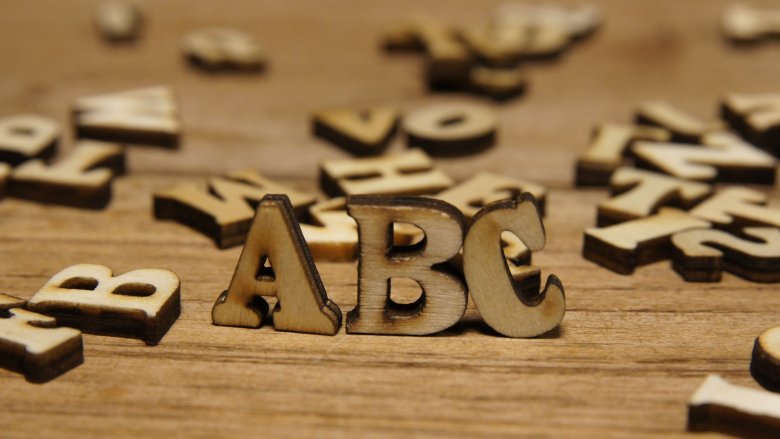The One Letter In The Alphabet Most Of Us Can't Write
The idea that there's any letter in the alphabet that most people can't write is pretty insane. We spend an obscene amount of time learning the alphabet, after all. It's almost a rite of passage sitting at the table, oversized pencil gripped in one hand, patiently writing out every letter of the alphabet over and over again until they're all perfect.
So what gives?
When researchers from Johns Hopkins University published the results of a very strange study, they revealed when they asked people about the two forms of the lower-case "G," most failed. Almost none of the subjects could write it, most couldn't pick the correct one out of a lineup, and some even denied there were two different versions of the little "g" ... despite seeing it all the time.
Here's the thing: Anyone who writes the lowercase "g" by hand is most certainly writing what's called the opentail g. It's the one everyone is taught in school, so it sticks in the brain. The other is the looptail g, and that's the one that's used in most print media, particularly those that use ultra-common fonts like Times New Roman. It's super-common in books; Time found 74 percent of children's picture books use it, it's in 89 percent of kids' chapter books, and a whopping 97 percent of adult books use it ... but our brains seem incapable of remembering it.
Researchers put their subjects through a series of tasks, including one as simple as picking the correct looptail g from among several incorrectly written ones. Most couldn't, and that's incredibly weird. The idea that people can read a letter they can't write or recognize out of context is pretty stunning. How the heck can we not recognize a "g"?
Part of it might be the fact that most kids aren't taught to write the looptail g, and lessons focus on the opentail version. That means the looptail version becomes more of what Time calls a "stylistic conceit" than a letter, and there's a difference. We only need to recognize the former, not write it ourselves, so lazy human brains just don't bother.
Researchers suggest this is a huge deal for a few reasons. They suspect children who have reading difficulties from a young age might be getting stumped by this pretty common letter. (There are two versions of "a," too, but we don't seem to have the same problems with it.) Let's face it, it doesn't really make sense to teach kids to write one way and read something else.
It also makes them wonder just what it says about how we retain information. If we see things all the time, we should remember it ... right? Isn't that how memory works? But for some reason, we're constantly exposed to this one pesky letter and the shape — and even the very existence of it — just doesn't stick with us. And that suggests memory is about a lot more than just looking at something, or even about more than registering the meaning and purpose of something.
We're a lot more complicated than we thought.
So, where did this rogue "g" come from, anyway? The Atlantic found that the cryptic, mysterious, seemingly invisible looptail g is the original version. It's been traced back to eighth-century monks who spent their entire lives praying, copying religious texts, and praying some more. The style of writing they used was Carolingian script, including the weird "g."
Anyone today who thinks the looptail g is unnecessarily complicated agrees with the monks. By the 15th century, monks and scribes had turned the very pretty letter into a sort of shorthanded version of itself, and it's what kids are taught in their penmanship lessons today. It stuck, mainly, because the printing press was invented around the same time that the opentail g took its place in Gothic script, and when books were printed, they used Gothic letters that looked similar to handwriting.
Check out any of the Gothic family of fonts today, and they still use the opentail g like the one that's written by hand. What gives? When the Renaissance rolled around, people wanted to revive the old ways — including Carolingian script. That became the go-to for printers because it looked all fancy, but when it came to writing by hand, people went the easy route.
So, there it is: human nature and laziness strikes again.

